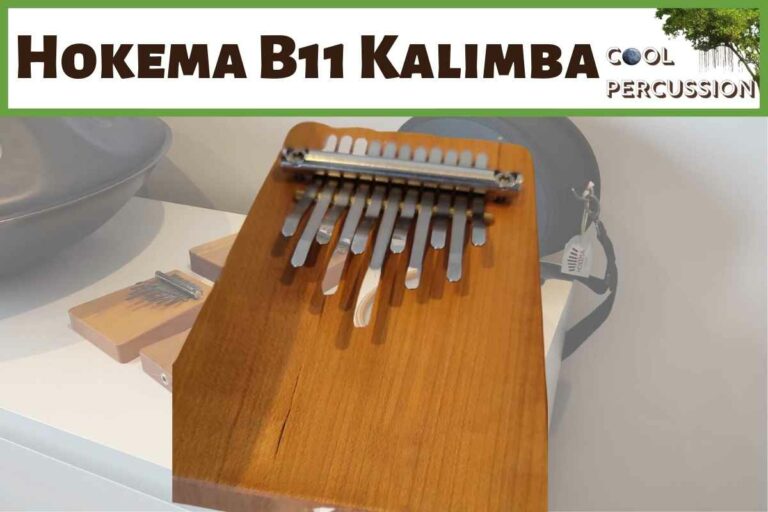7 Types of Kalimba (Inc Sansula, Electro & Array Mbira)
The Kalimba is a traditional African instrument that originates from the Shona people of Zimbabwe, used for centuries as an accompaniment to songs, dances, and rituals. Types of Kalimba vary by shape and sound, but they are all made up of keys or tines, creating different pitches when plucked with the thumbs, which is why they are also often referred to as thumb piano.
This Kalimba buying guide will run through the various kinds of Kalimbas that are available for purchase. Helping you on your Kalimba journey, and transforming you into a Kalimba owner.
7 Different Types of Kalimba
- Mbira – Original African Instrument
- Sansula – Mounted Kalimba
- Wooden Kalimba – Various Types
- Box Kalimba – Mounted on a box with sound holes
- Board Kalimba – Mounted on a flat board
- Pocket Thumb Piano – A mini, pocket-sized instrument
- Electro Kalimba
- Acrylic Kalimba – Mounted on formed acrylic
- Chromatic Kalimba
- Array Mbira
Collectively the Mbira have become known and developed as Kalimbas, potentially from more northern parts of Africa and into the wider world.
Mbira and Kalimba belong to the Lamellaphone family of instruments.
The Lamellaphone makes its sound by a thin vibrating metal plate called a ‘tine’ in the case of the Kalimba, which is fixed at one end and has the other end free, the length of which determines the pitch or note.
They are played by pressing down the tine and then releasing in s sharp motion, [letting your thumb slip off], which vibrates the tine and produces the sound.
1. Mbira
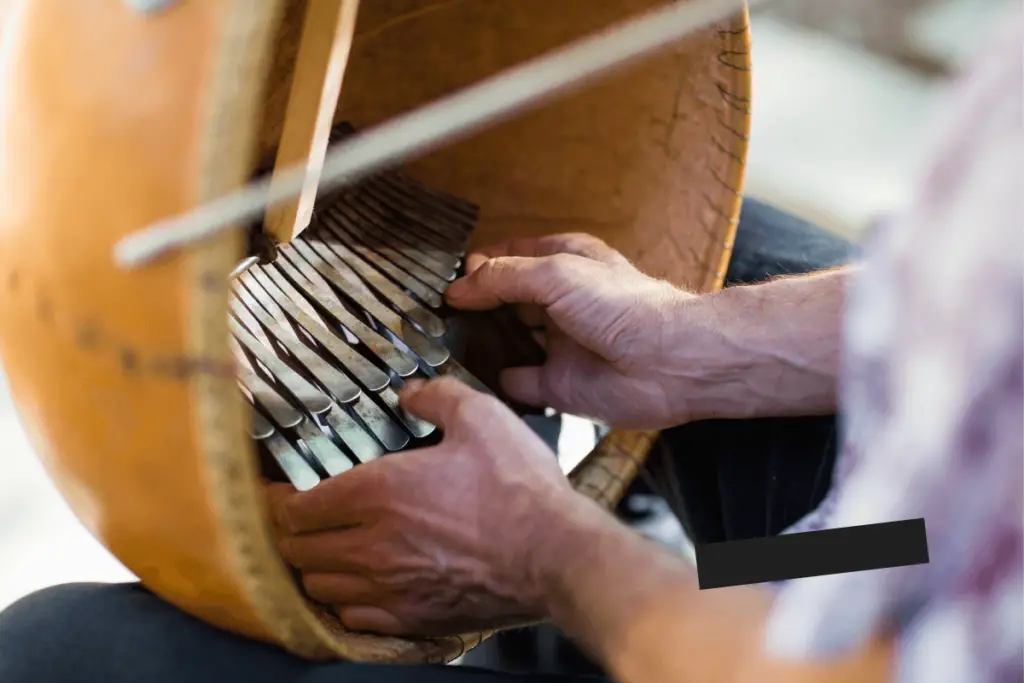
One should not underestimate the importance of the original Mbira [pronouced m-BEE-ra] for The “Art of crafting and playing Mbira/Sansi, the finger-plucking traditional musical instrument in Malawi and Zimbabwe” was added to the UNESCO Representative List of the Intangible Cultural Heritage of Humanity in 2020.
The original form of Mbira looks rather primitive in comparison to modern Kalimbas, but herein lies the beauty, tone, feel, and essence of this traditional and culturally important instrument.
The video below shows the Mbira, and provides the incredible history of the instrument. This is the reason it is at the head of the page. Without the Mbira, we would not have the Kalimba today
2. Sansula
Sansula Renaissance A Minor $208
Introducing the Hokema Kalimba Sansula Renaissance, a fusion of the captivating Kalimba and resonating Sansula. Handcrafted with precision, this instrument delivers exceptional sound quality, and exquisite craftsmanship.
We move on to the Sansula, another form of thumb piano somewhere between the original Mbira, the Gourd Kalimba, and what we now expect to see when thinking of a kalimba.
Set on a drum head to resonate the sound, this recent invention replaces the need to precariously rest and original mbira on a gourd or deze as the Zimbabwe people would.
Hokema is a musical instrument builder in Germany that makes all of its models with the same Kalimba Block – 9 tines default tuning A minor set on drum heads of 3 varying types.
Types of Sansula
- Sansula Basic – It’s not a toy as the skin is fragile and may fracture. For this reason, it is recommended for adults only.
- Sansula Renaissance – The durable Remo drum skin makes it moisture resistant and ideal for professionals and novices.
- Sansula Deluxe – To be cared for as the natural goatskin will react to moisture. There are tension screws for the skin to provide pitch control, as in a Pandeiro.
In addition to standard a minor tuning, the basic and renaissance models can be tuned and supplied with a B7( penta C) or a B11 ( G-major) tuning.
3. Wooden Kalimba
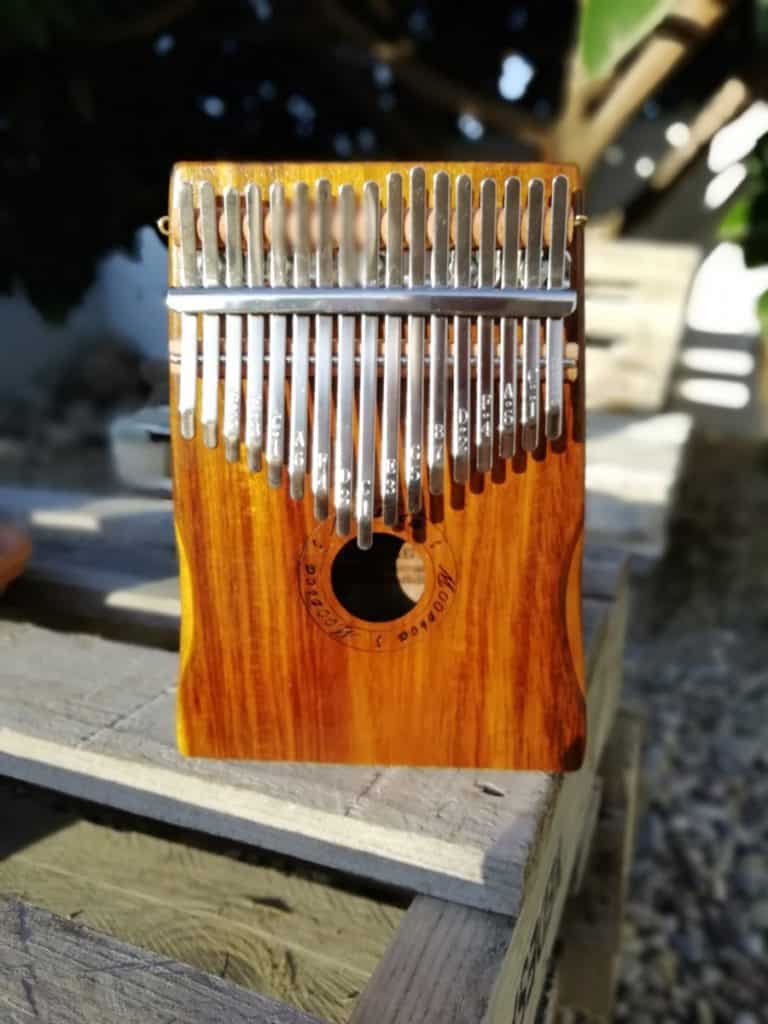
The wooden Kalimba is what most people will find when they search for one or look for more information on thumb piano or Kalimba on the internet. They are the most common type can be constructed of various type of wood.
But they too come in a range of options, styles, and builds
a. Box Kalimba – Mounted on a box with sound holes
The box Kalimba will be recognizable with keys [times] set on a box with a sound hole on the front and two smaller sound holes on the reverse of the box, providing superb sound quality.
They are the visual classic Kalimbas of our time.
The sound holes on the reverse are used to have an impact on sound to mute and create ‘Wah-Wah’ sound effect, or vibrato as required.
It might be tabled they produce a warm tone and the front-facing sound hole provides more resonance.
b. Board Kalimba – Mounted on a flat board
The board-mounted common Kalimba is another design and described perfectly as they are just as you would imagine them to be and available in a range of choices.
You find the bridge and flat-board kalimba tines set upon a square, rectangle or curved board as my Gecko kalimba example is.
You are missing the wah-wah sound effect you can achieve with the box, but in my experience, the tones crisp, clean sound.
More tines: I have seen flat board amazing kalimba with up to 21 tines, but as yet, unless venturing into chromatic Kalimbas, have I not found a standard soundbox kalimba with as many keys to play unless venturing into the realm of the Chromatic Kalimba, which I cover shortly.
This suggests there is more versatility with flat board kalimbas
c. Pocket Thumb Piano – A mini, pocket-sized instrument
I have a fantastic pocket Kalimba, which I do carry around everywhere.
Do not let the size fool you into thinking the mini Kalimba is any lesser instrument; it is as loud and as tuneful with crisp, clean tones and notes, but you can expect to have fewer tines.
Carried around in your pocket you can always find a little window of time to play, and they can picked up for a lesser price than the larger instruments.
Treat Yourself – You are Worth It
I’ve just got my first Hokema Kalimba and couldn’t wait to tell you just how good they are. I have of course way too many now but had heard of the superior quality of the Hokema.
Starting at Around $40, I just wish I had found them sooner.
I’m considering an Electro version now, so crisp is this sound I want to hear it directly amplified.
4. Electric Kalimba
Oh yeah, baby, as the Electric Guitar is to the acoustic, the Electro Kalimba is too.
With the ability to connect through a jack port through a mixer or even effects pedal, you can throw your Kalimba onto steroids and ramp things up while amplifying the performance.
The electro Kalimba is ostensibly the same as a normal Kalimba with the sole difference of the Electric pick up positioned inside the instrument.
Want to play rock Kalimba? Pick up a fantastic electro version.

B9 Electro A-Minor $119
The Hokema Kalimba B9 Electro is an electrically amplified thumb piano tracing its roots in traditional African music. Meticulous craftsmanship and stringent tuning of its metal keys deliver enchanting rhythms.
B7 Electro C-Pentatonic $119
The Hokema Kalimba B7 is a modern interpretation of the traditional African thumb piano, renowned for its exquisite craftsmanship, high-quality material, and excellent sound quality. Ideal for various music genres
5. Acrylic Kalimba – Mounted on formed acrylic
The acrylic Kalimba mounts the bridge and tines onto an acrylic base, which can take on just about any shape or form thanks to the versatility of the manufacturing process.
Let’s not stray into thinking the Acrylic Kalimba is a novelty; they also produce beautiful sounds as beautiful as any kalimba to listen to.
The benefit of acrylic backing is some many styles and designs can make them look a bit different or even suit your style or color preferences.
6. Chromatic Kalimba
Big Boys and Girls toys. The Chromatic Kalimba is a different animal altogether.
A chromatic kalimba has been tuned to play Chromatically and will feature more tines, including sharps and flats.
The tines may be arranged on the reverse of the Kalimba or often set as the second row of keys above and slightly behind the bottom row.
Furthermore, because it is possible to identify the pitch relationship between each note on its tines and other notes, it will also assess their distance from “diatonics” based on that.
More sounds and melodies are accessible in this tuning than in traditional African thumb pianos or typical Western 12-tone scale instruments like guitars.
The benefits?
You’ll get access over an entire range of scales – including those with sharps (#) as well flats (-), which can give your music some new colors!
Which means…
It is Easier to play recognizable Western Music on a Chromatic Kalimba
One frustration that is often found in the limitation available in the basic scales, G or C of ‘normal’ kalimbas, which restrict the ability to play a complete tune or song that you might hear on the radio in the western world. The Chromatic Kalimbas has enough notes and tines to achieve this.
Want to take things up another level?
7. Array Mbira
The array mbira is a handcrafted, contemporary musical instrument with a distinctive tone.
The product of its inventor Bill Wesley is produced in the United States by Wesley with Patrick Hadley in San Diego, California.
In the 1960s, its invention began. It is a complete makeover of the African Mbira and belongs to the lamellaphone family.
When you compare a mini pocket Kalimba with seven tines against the ‘Array’ Mbira, it’s hard to believe they come from the same family of Lamellaphone instruments.
The array mbira is a marvel of technology and human engineering as much as it is an instrument to play – the Array Mbira has been designed from the ground up, making them outstanding sounding instruments and an extension to the traditional instrument from Africa.
The main difference, as is visually noticeable, is that the Array Mbira is more extensive and has a different look than sound. And you will have without doubt noticed that they somewhat dwarf the 7, 9, 11, or even 21 tine configuration to 150 tines on the Array.
The metal tines are grouped into multiple octaves, thus producing a far more comprehensive range of musical composition possibilities than the Kalimba.
My Favourite Kalimbas for Beginners
I own quite a few Kalimbas of differing sizes, keys, styles, and prices. I was somewhat addicted for a while! Anyway, having gone through quite a few when I first started getting interested, I have a couple of recommendations for you, if you are looking to buy your first, so you can try one out inexpensively and see if you want to take things further
Chances are, you’ll stick with one of these as you can learn and grow with them, which is why I’ve picked them out
Gecko Kalimba
This was the first-ever Kalimba I bought and it is the one I use the most today.
Because it is so gorgeous looking, I have mine on display in the office.
Hluru Board Kalimba
One thing that you might be slightly surprised about is that you can gain a richer sound from the board kalimba as opposed to the Box.
They are also a little easier to play if you do not have big hands because the depth is much shallower
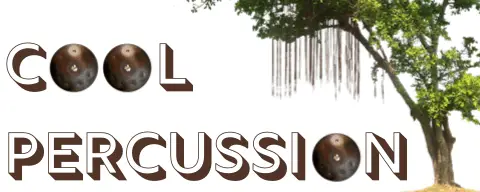
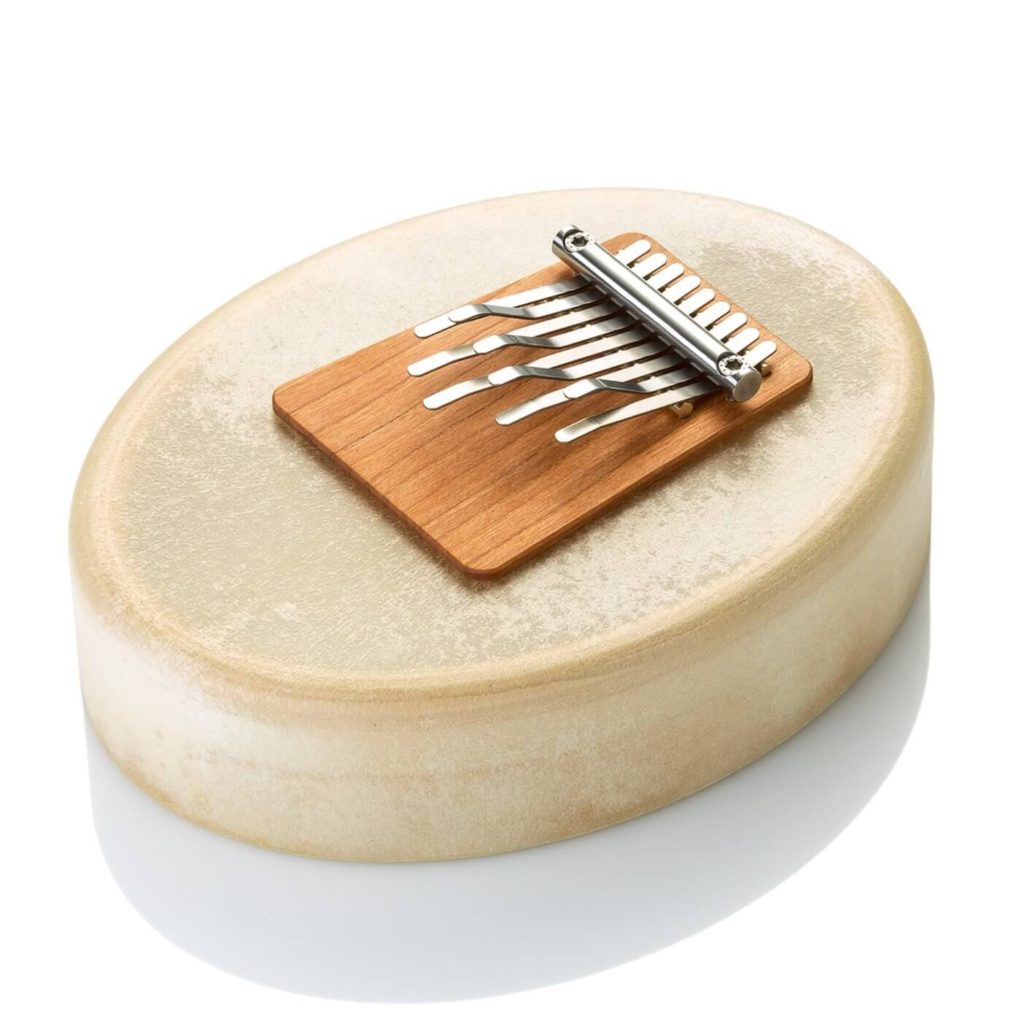
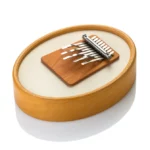
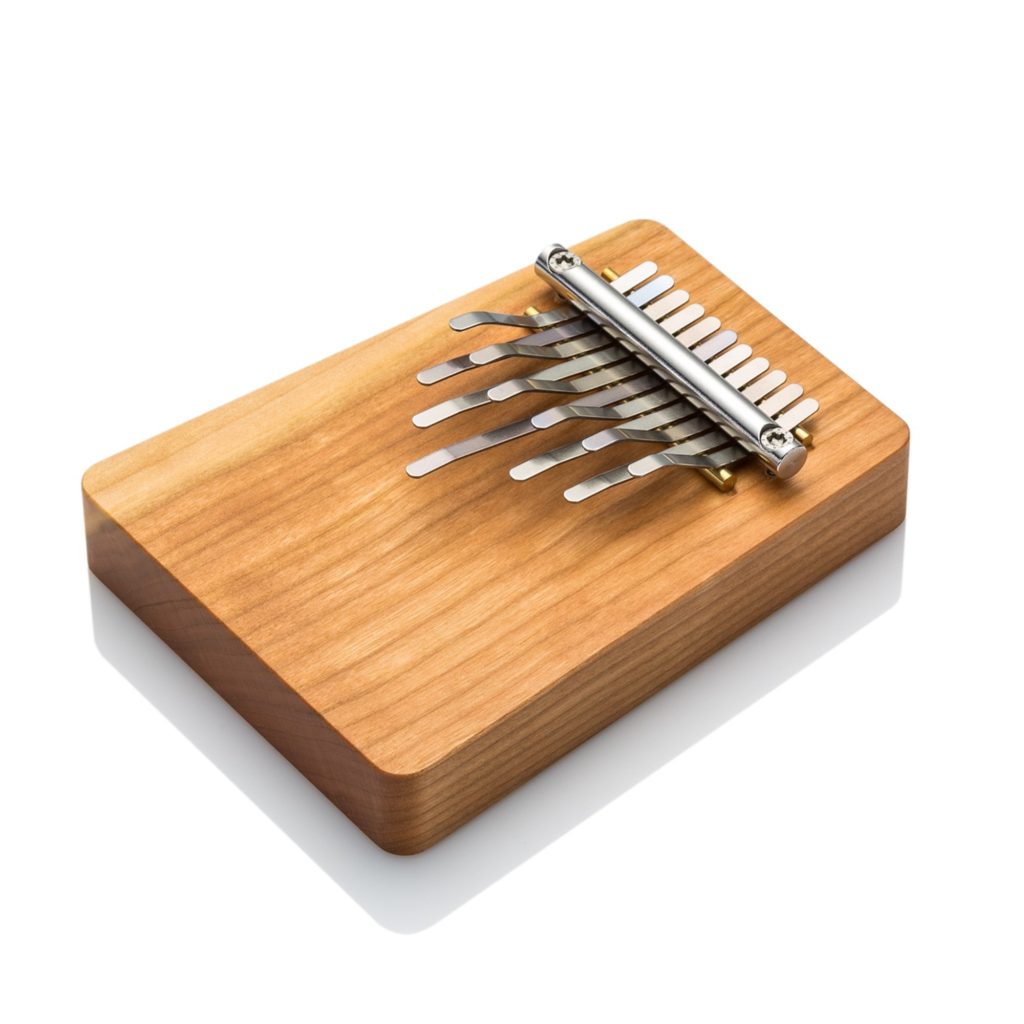
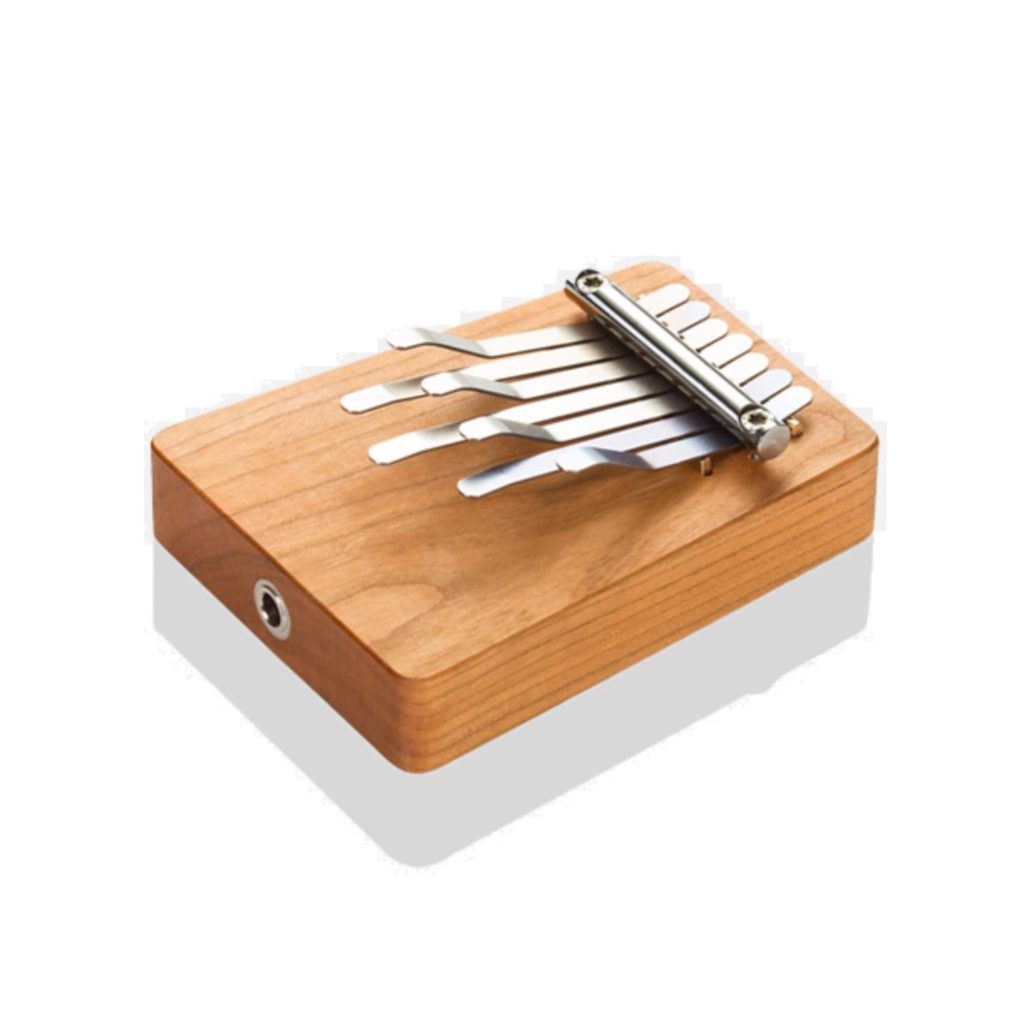

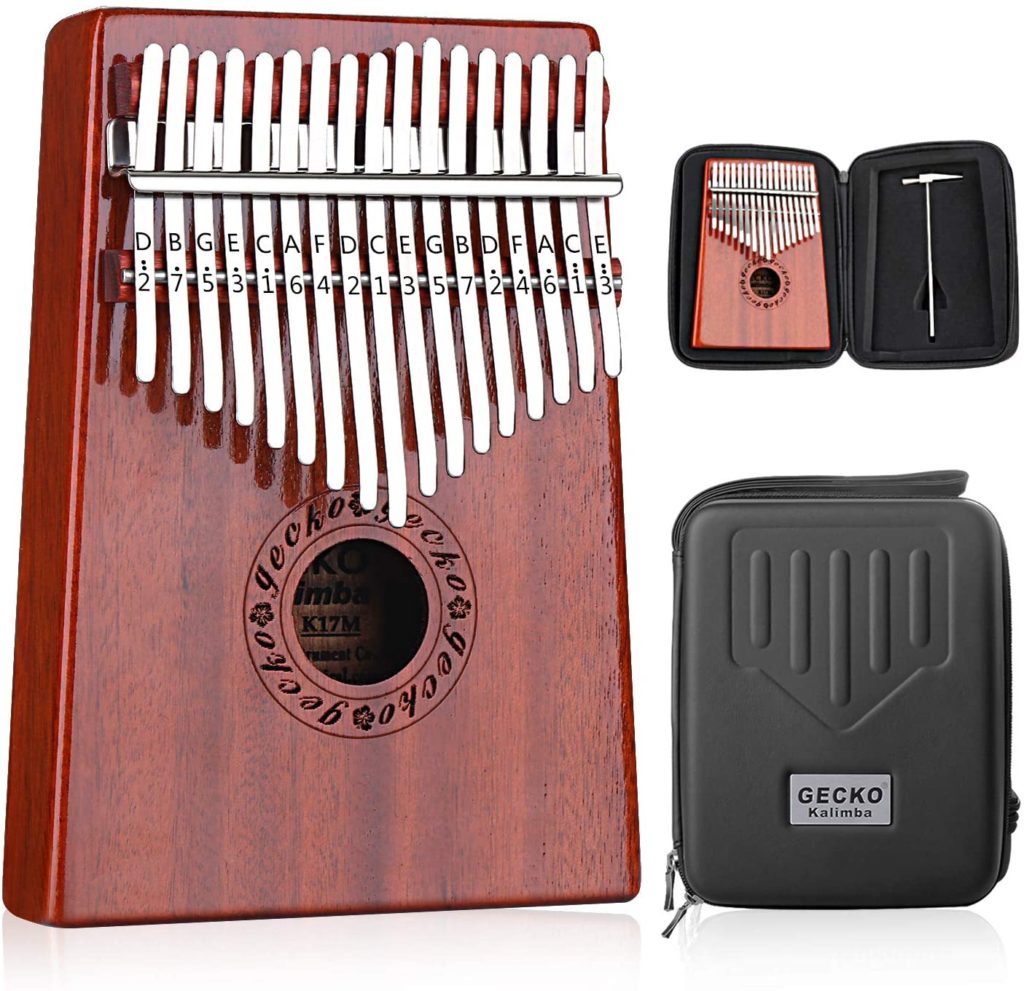
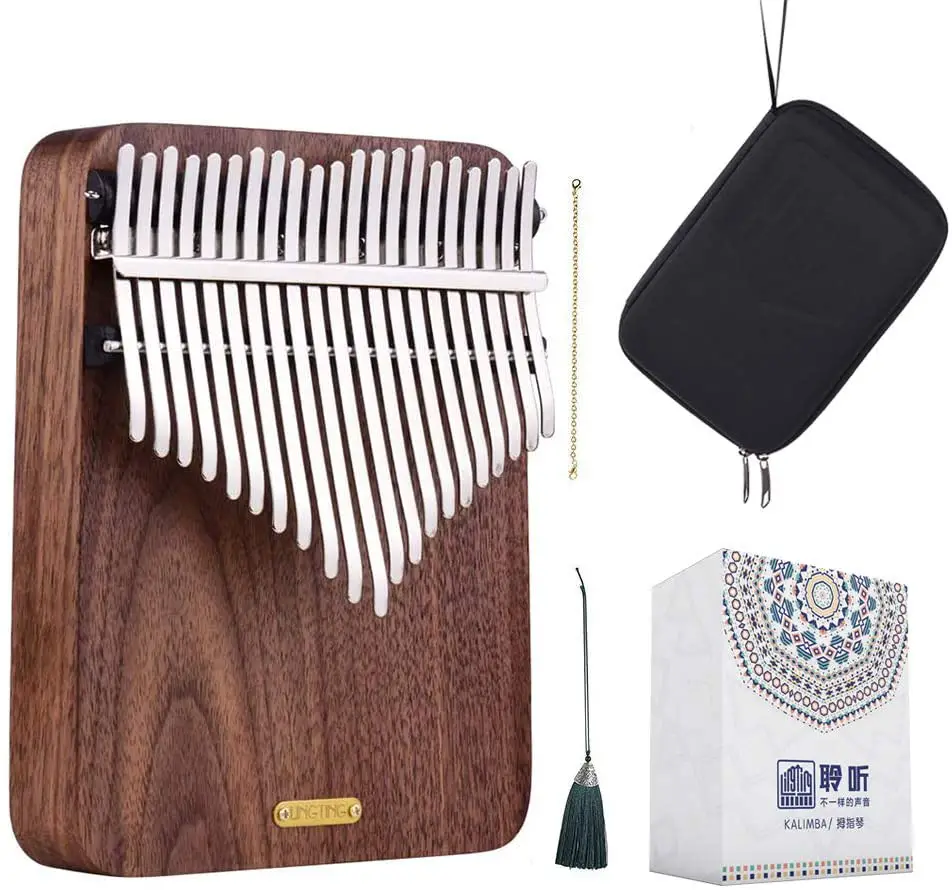
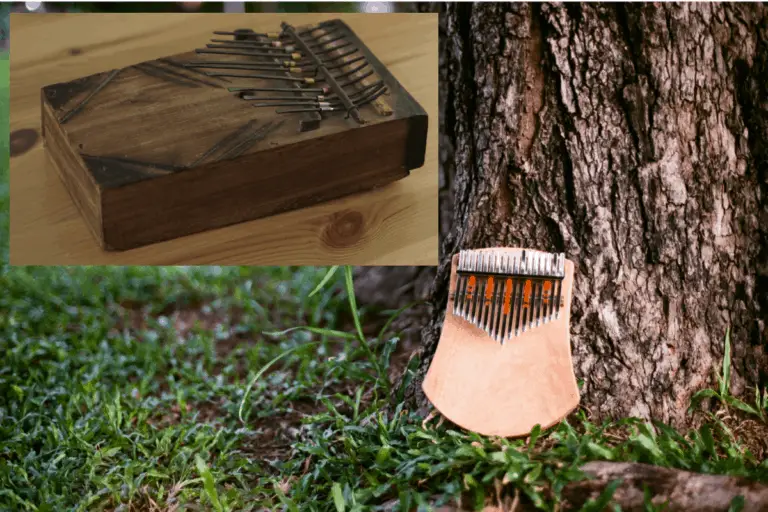
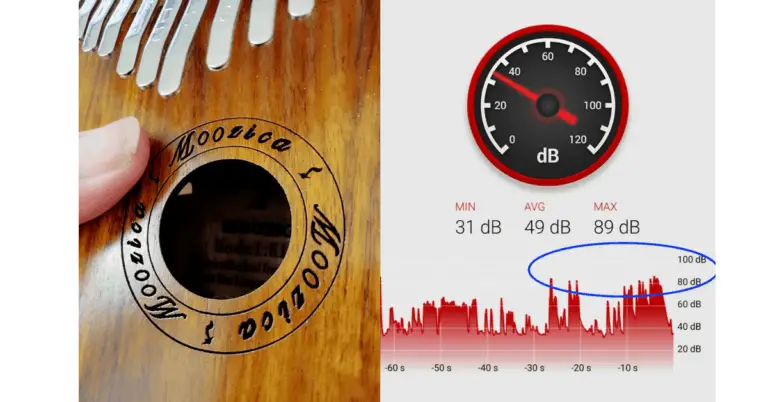
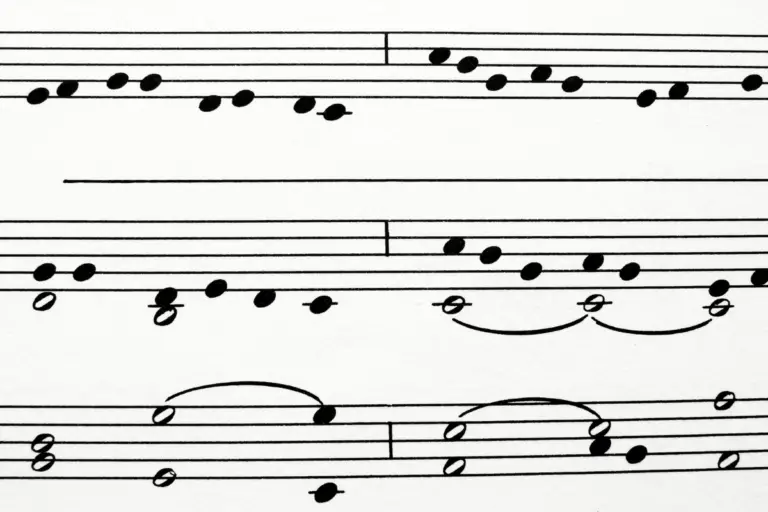
![[EASY] How to Tune a Kalimba Properly (Tools, Tips & Scales)](https://cdn-0.coolpercussion.com/wp-content/uploads/2020/10/61aJbYAhlzL._AC_SL1500_-768x655.jpg)
